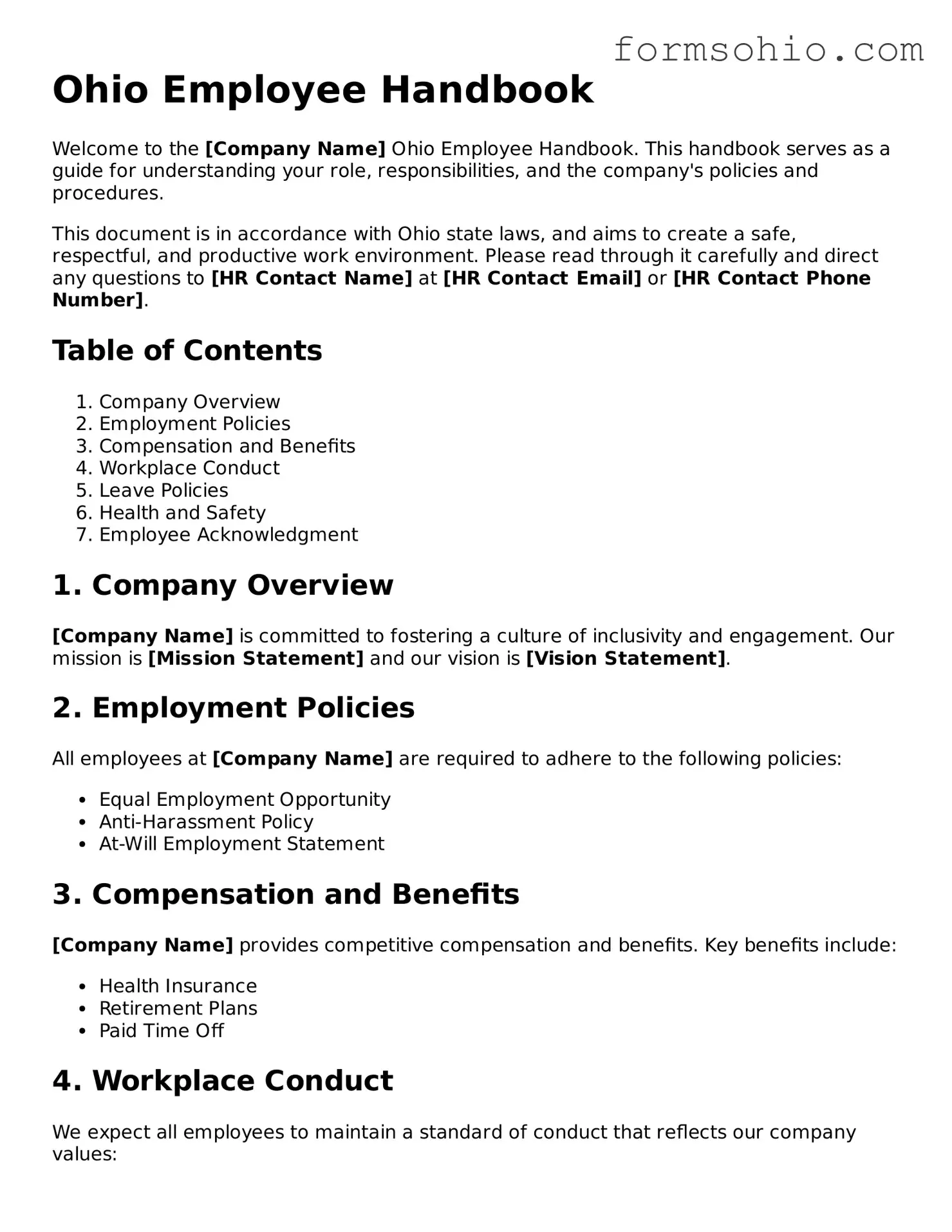Ohio Employee Handbook
Welcome to the [Company Name] Ohio Employee Handbook. This handbook serves as a guide for understanding your role, responsibilities, and the company's policies and procedures.
This document is in accordance with Ohio state laws, and aims to create a safe, respectful, and productive work environment. Please read through it carefully and direct any questions to [HR Contact Name] at [HR Contact Email] or [HR Contact Phone Number].
Table of Contents
- Company Overview
- Employment Policies
- Compensation and Benefits
- Workplace Conduct
- Leave Policies
- Health and Safety
- Employee Acknowledgment
1. Company Overview
[Company Name] is committed to fostering a culture of inclusivity and engagement. Our mission is [Mission Statement] and our vision is [Vision Statement].
2. Employment Policies
All employees at [Company Name] are required to adhere to the following policies:
- Equal Employment Opportunity
- Anti-Harassment Policy
- At-Will Employment Statement
3. Compensation and Benefits
[Company Name] provides competitive compensation and benefits. Key benefits include:
- Health Insurance
- Retirement Plans
- Paid Time Off
4. Workplace Conduct
We expect all employees to maintain a standard of conduct that reflects our company values:
- Professionalism
- Respect
- Integrity
5. Leave Policies
Employees are eligible for various types of leave, including:
- Personal Leave
- Sick Leave
- Family and Medical Leave (FMLA)
6. Health and Safety
Keeping our workplace safe is a priority. All employees must:
- Report safety hazards immediately
- Participate in training sessions
- Follow all safety protocols
7. Employee Acknowledgment
By signing below, you acknowledge that you have received and read the [Company Name] Ohio Employee Handbook.
Employee Name: ________________________
Date: ________________________
